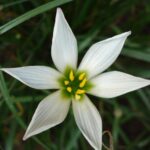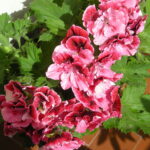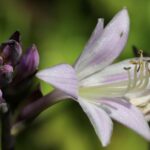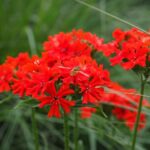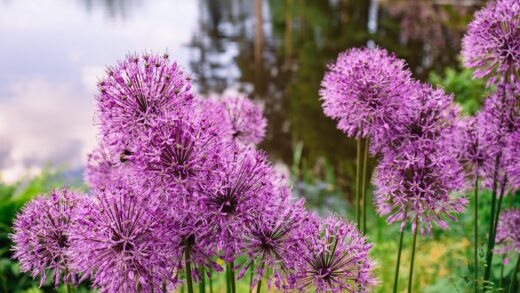Wintering the slender parrot leaf

The slender parrot leaf, with its origins in the warm climates of the tropics, is inherently sensitive to cold and cannot tolerate frost. For gardeners in regions with cold winters, this presents a challenge that requires a clear and effective strategy for overwintering. Simply leaving the plant outdoors to face freezing temperatures will inevitably result in its demise. Therefore, planning ahead is crucial to preserve this vibrant plant from one season to the next. Fortunately, there are several reliable methods for successfully wintering the slender parrot leaf, allowing you to enjoy its beauty year after year. The chosen method will depend on your available space, light conditions, and personal preference.
The primary options for overwintering include bringing the entire plant indoors to be kept as a houseplant, or taking cuttings in late summer or early autumn to grow into new, smaller plants over the winter. Each approach has its own set of advantages and requirements. Bringing a mature plant indoors allows you to preserve a larger specimen, but it requires adequate space and very bright light to prevent it from becoming weak and leggy. Taking cuttings is a space-saving alternative that ensures you have fresh, vigorous young plants ready for the garden in the spring.
Regardless of the method you choose, the preparation for wintering should begin before the first frost is on the horizon. Waiting until the last minute can result in a stressed or cold-damaged plant that is less likely to survive the transition indoors. The goal is to bring a healthy, pest-free plant or cutting into your home. This process of transitioning the plant from outdoor to indoor conditions requires care and attention to help it acclimatize successfully.
Successfully overwintering the slender parrot leaf is a rewarding process that allows you to perpetuate your favorite cultivars without having to purchase new plants each spring. It bridges the gap between the growing seasons and ensures a continuous display of color in your garden. With a little planning and the right technique, you can easily protect this tropical gem from the ravages of winter and have it ready for a spectacular return when the warm weather arrives.
Preparing the plant for winter
The preparation for bringing a slender parrot leaf indoors for the winter should start several weeks before the first anticipated frost date. The first step is to thoroughly inspect the plant for any pests. Outdoor plants are often home to a variety of insects, and you do not want to introduce these pests into your home where they can spread to your other houseplants. Carefully examine the stems, the tops and undersides of the leaves, and the soil surface for any signs of aphids, spider mites, mealybugs, or other unwanted guests.
More articles on this topic
If you do find any pests, it is essential to treat the plant while it is still outdoors. A thorough spray with insecticidal soap or neem oil is often effective. You may need to apply the treatment a couple of times, following the product’s instructions, to ensure all pests and their eggs have been eliminated. It is much easier and safer to deal with these issues outside than to battle an infestation in your home during the winter. A strong spray of water from a hose can also help to dislodge many common pests before you apply any treatment.
Once you are confident the plant is pest-free, consider giving it a light pruning. Trimming the plant back by about one-third can make it more manageable in size for bringing indoors and can also encourage a flush of new, compact growth once it has adjusted to its new environment. Pruning also helps to improve air circulation around the foliage, which is beneficial in the often stagnant air of an indoor setting. Remove any dead, yellowing, or damaged leaves and stems to tidy up the plant and reduce potential sites for disease.
The final step in preparation is to begin the acclimatization process. Plants can be shocked by a sudden and drastic change in their environment. To ease the transition from outdoors to indoors, you should bring the plant inside for gradually increasing periods over the course of a week or two. Start by bringing it in at night and putting it back out during the day. Then, begin leaving it indoors for longer periods during the day until it is fully accustomed to the lower light and humidity levels of your home. This gradual approach significantly reduces the stress of the move.
Overwintering indoors as a houseplant
Once you have prepared and acclimatized your slender parrot leaf, it is time to find it a suitable location indoors for the winter. The single most important factor for its success as a temporary houseplant is light. This plant needs very bright light to maintain its color and avoid becoming weak and leggy. The best possible location is directly in front of a south-facing window where it can receive the maximum amount of direct sunlight available during the shorter winter days. An east or west-facing window can be a secondary choice, but a north-facing window will almost certainly not provide enough light.
More articles on this topic
If you do not have a location with sufficient natural light, you will need to supplement with artificial lighting. A simple fluorescent shop light or a dedicated LED grow light can make a world of difference. The lights should be positioned about 15 to 30 centimeters above the plant and kept on for 12 to 14 hours per day. Using a timer can make this process effortless. Providing adequate light is non-negotiable; without it, the plant will likely decline over the course of the winter, losing its vibrant color and becoming a pale, stretched-out version of its former self.
During the winter, the plant’s growth will slow down significantly, and its care routine must be adjusted accordingly. The biggest danger during this period is overwatering. With lower light levels and slower growth, the plant will use much less water than it did outdoors in the summer. You should allow the top few centimeters of the soil to dry out completely before watering. When you do water, do so thoroughly, but then allow the excess to drain away completely. Do not fertilize the plant at all during the winter months; resume feeding only when you see signs of active new growth in the spring.
Maintain a watchful eye on the plant throughout the winter. Indoor environments, especially with central heating, can have very low humidity, which can stress the plant and encourage pests like spider mites. You can increase humidity by placing the pot on a pebble tray, grouping it with other plants, or using a room humidifier. Continue to inspect the plant regularly for any returning pests that may have survived the initial treatments. By providing the right light and adjusting your care routine, you can keep your slender parrot leaf healthy and ready for its return to the garden.
Taking cuttings for overwintering
An excellent and space-saving alternative to bringing an entire large plant indoors is to overwinter small cuttings. This method allows you to preserve the plant’s genetics in a much more manageable format. The process should begin in late summer or early autumn, at least a month before the first frost, to give the cuttings enough time to develop a healthy root system before the onset of winter. The procedure for taking the cuttings is the same as for general propagation: select healthy, 10 to 15-centimeter-long stem tips and cut them just below a leaf node.
After preparing the cuttings by removing the lower leaves, you can root them in a jar of water or directly in a pot of moist, sterile potting medium. Rooting in water is a simple and effective method that allows you to easily monitor the progress of root development. Once a good network of roots, about 2 to 3 centimeters long, has formed, the cuttings can be transferred into a small pot filled with a well-draining potting mix. It is often a good idea to plant several rooted cuttings together in one pot to create a fuller, more attractive plant from the start.
Once potted, the new young plants should be treated much like a mature plant being brought indoors for the winter. They require the brightest possible light to thrive. A spot on a sunny windowsill is ideal, or you can place them under grow lights. Because they are young and actively growing, they may require slightly more consistent moisture than a mature, dormant plant, but you should still be careful to avoid overwatering. The goal is to keep them growing steadily but compactly throughout the winter months.
The advantage of this method is that by the time spring arrives, you will have several small, vigorous, and well-rooted young plants. These new plants are often more robust and adapt more quickly to being planted outdoors than a larger, older plant that has struggled through the winter indoors. You can pinch the tips of the young plants during the winter to encourage them to become bushier and more compact. This ensures you will have perfect, ready-to-go specimens to create a stunning display as soon as the weather warms up.
Reintroducing the plant to the outdoors in spring
When the danger of frost has passed in the spring and nighttime temperatures are consistently staying above 10°C, it is time to begin the process of moving your overwintered slender parrot leaf back outdoors. Just as it was important to acclimatize the plant to indoor conditions in the autumn, it is equally crucial to reverse the process in the spring. A plant that has spent the entire winter indoors will be very sensitive to the intense sunlight, wind, and temperature fluctuations of the outdoors. Moving it directly into full sun can result in severe sunburn on the leaves, from which it may not recover.
This re-acclimatization process is known as hardening off and should be done gradually over a period of 7 to 14 days. Start by placing the plant in a shady, sheltered location outdoors for just an hour or two on the first day. A spot on a protected porch or under a large tree is ideal. Each day, gradually increase the amount of time the plant spends outside and slowly introduce it to more direct sunlight. Begin with the gentle morning sun and avoid the harsh midday sun for the first several days.
During the hardening-off period, you will need to monitor the plant’s water needs carefully. The increased light and airflow outdoors will cause the soil to dry out much more quickly than it did inside. Check the soil daily and water as needed. This is also a good time to resume your fertilizing schedule. You can start with a half-strength dose of a balanced liquid fertilizer to provide the nutrients needed to support the new flush of growth that the return to outdoor conditions will stimulate.
Once the plant has been fully hardened off and is accustomed to spending the entire day and night outdoors, it can be planted into its final position in the garden or in a larger container. If the plant became leggy over the winter, you can give it a good pruning at this time to encourage bushier, more compact growth. With this careful reintroduction, your overwintered slender parrot leaf will quickly adapt and begin to flourish, rewarding you with another full season of its spectacular and vibrant foliage.
📷 Flickr / Szerző: cultivar413 / Licence: CC BY 2.0








